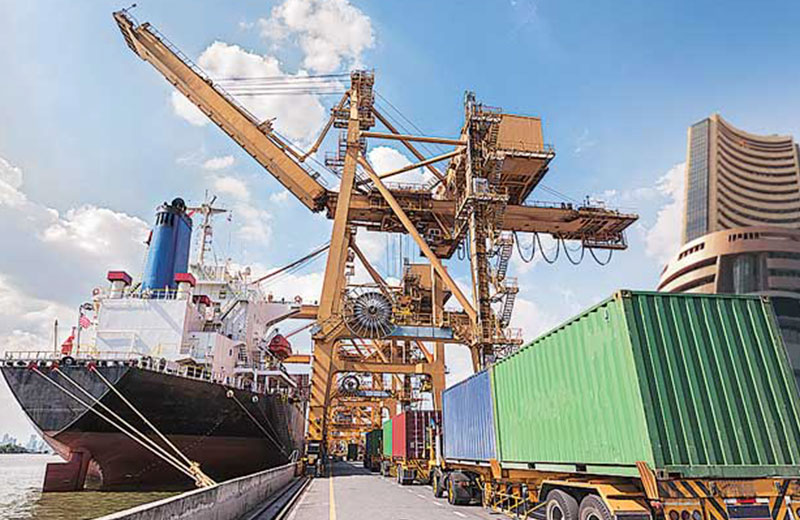West Bengal Chief Minister Mamata Banerjee’s resistance to road movement of cargo has brought a change in the freight logistics paradigm in India-Bangladesh trade. For the first time, sea and rail overtook road in terms of cargo volume across the border with Bangladesh.
Road cargo movement through the border gates in West Bengal has come to a grinding halt over the past two months. Though the Indian government lifted all restrictions on cargo movement after the end of the first phase of the lockdown, in mid-April, the Mamata government prevented border trade.
While Central authorities run border facilities, the State holds the key in ensuring access to the border post. Strict enforcement of the lockdown saw even Indian drivers who had gone to the Bangladeshi side to deliver goods not being allowed to return.
Strong reminders from Union Home Secretary Ajay Bhalla, on May 3, about the constitutional obligations of the State government in ensuring international trade, failed to make any difference to the ground scene. Banerjee obliquely referred to the threat of infection spread from Bangladesh.
A long-pending agenda
With $10-11 billion of bilateral trade, Bangladesh is India’s largest trade partner in South Asia and among the top importers of Indian goods. Till Covid struck, the majority of trade took place by road, followed by rail, ocean and inland water transport (IWT).
Due to its locational advantage, the majority of the road cargo moved through West Bengal, with the Petrapole (India) – Benapole (Bangladesh) border, near Kolkata, being the most preferred route.
To avoid congestion and local political nexus adding to the cost of trade, India has been pushing other modes of transport since the Vajpayee era. However, such initiatives achieved limited success in the past, both due to inadequate efforts from India to mitigate logistics gaps and lack of cooperation from Bangladesh.
The scenario changed over the last six years, with the Modi government firing on all cylinders to reduce logistics costs for both domestic and international trade. The initiative got able support from the Sheikh Hasina government in Dhaka.
Accordingly, India and Bangladesh entered into a coastal shipping agreement in 2015. In 2018, the IWT protocol route was extended. Apart from widening options for transit cargo movement to India’s North-East, the new protocol allowed the movement of containers between Kolkata and Dhaka (Pangaon).
A huge escalation in Indian lines of credit over the past five years increased the pace of rail connectivity and gauge harmonisation projects in Bangladesh. This will help run freight trains between the two countries after Bangladesh completes the Padma Bridge in a year or two.
But till that happens, transshipment arrangements in Bangladesh see rail cornering the lion’s share of the voluminous cargo. Auto fuel, which is a new addition to the trade list, is transported through rail till the proposed cross-country oil pipeline is implemented.
Lock down boost
Despite the availability of transport options, road continued to hold eminence in the bilateral trade till March. This was due to the preference of Bangladeshi importers, availability of soft infrastructure at land borders, inadequate handling capacity at Chittagong port of Bangladesh, the prevalence of bulk cargo, and restricted use of Kolkata-Dhaka container shipment.
The lockdown failed to improve containerisation (thereby limiting the optimisation of the Kolkata-Dhaka IWT) but forced both the buyer and seller to look for other options.
In May, an Indian exporter sent a 21-wagon rake of paddy seeds to Bangladesh via rail. Normally such cargo moves by road. Rail movement was partly constrained by the fact that Indian Railway doesn’t take parcel load in bulk or semi-bulk cargo. The benefit went to shipping.
Sponge iron makers in West Bengal, Odisha and Jharkhand are reportedly taking the sea route to export cargo to Bangladesh. Due to the paucity of coastal shipping lines, initially such cargo was moving via Singapore through international liners that attracted higher prices and longer shipping times.
The scene changed with increasing demand. According to freight forwarding circles, till last year, there were barely two vessels used to ply between Kolkata and Chittagong ports. The number was down to one at the beginning of the lockdown, due to an overall decline in cargo. It has now risen to four.
Temporary shift?
Vinit Kumar, Chairman of Kolkata port, confirmed the shift from road to shipping. However, the volumes are not known as yet. The Commerce Ministry has not updated the trade data after December due to the pandemic.
Meanwhile, industry insiders fear that the shift may be temporary unless measures are taken in both India and Bangladesh to improve the attractiveness of other modes over road.
This is primarily due to two reasons. First, the capacity starved Chittagong port normally focusses on readymade garments (RMG) exports, which is practically the only merchandise exports of Bangladesh. The port is currently enjoying excess capacity due to the cancellation of RMG export orders.
Second, though theoretically shipping and rail are way cheaper than road, the one-sided nature of trade adds to the freight cost on these modes. In comparison road cargo is unloaded right at the border.
Third, rampant overloading, particularly in the eastern region of India, is a major reason behind making road cargo cost-effective. So much so that even boulders (used in construction) are often taken on road. A 20-tonne capacity truck carries up to 40-tonne sponge iron, which is manufactured in the East.
If overloading is stopped a good percentage of cargo will be forced to shift to other modes. However, that is easier said than done, as overloading is a major source of political funding in the region.






